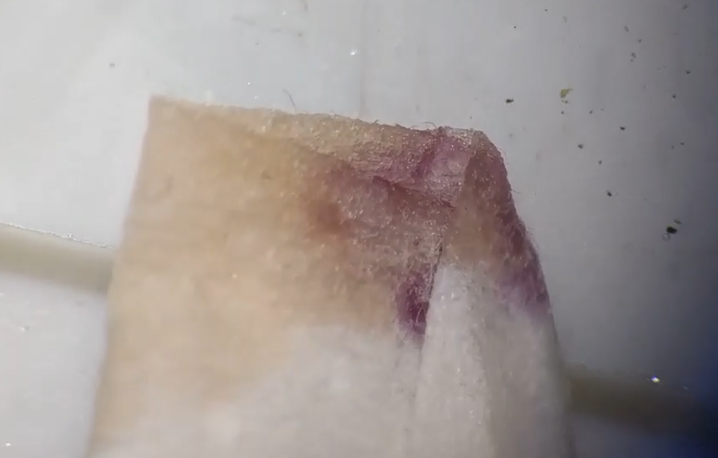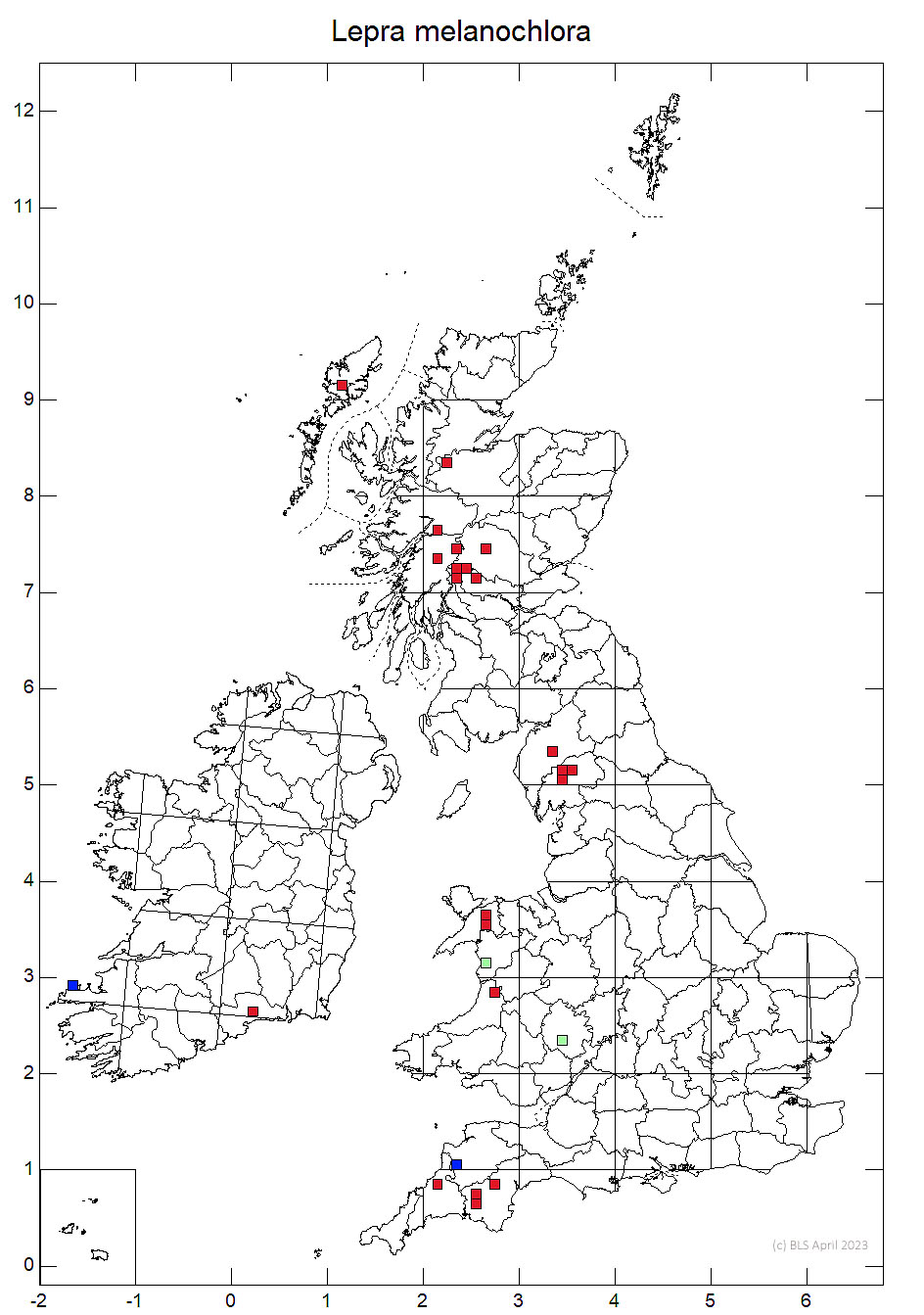Description from Cannon et al (2021) below.
Thallus rather thick, grey to dark grey, ± rimose with abundant crowded coarse ± cylindrical isidia-like papillae, 2–3 mm tall × 0.5–2 mm broad, rarely branched, with blunt, flattened pale apices, often abraded exposing a white medulla which may form a few granular soredia. Fertile warts rare, arising from papillae, later expanding to 2– 3.5 mm diam.; apothecia often poorly developed, 1-5 per papilla; disc 1.5–2 mm diam., black, whitish pruinose, flat or convex, irregular, surrounded by a curved, wrinkled thalline exciple. Asci 1-spored. Ascospores 180–250 (–300) × 70–130 (– 200) μm; wall ca 22 μm thick, smooth, unzoned. Conidia 4–5 × 0.5–1 μm, cylindrical. Thallus C–, K+ yellow-red, KC+ magenta-violet (fleeting), Pd+ orange-red, UV– (picrolichenic and protocetraric acids).
Like L. amara and L. pulvinata, it has a characteristic very bitter taste and KC+ magenta-violet thallus; it is separated by the distinctive gross peg-like pale-tipped papillae. The KC reaction is fleeting and best observed on squashes of thallus or papillae on filter paper.
On siliceous rock, typically on the sides of large boulders.

Very rare. S.W. England (Dartmoor), N. Wales (Merionethshire, Caernarvonshire), N. England (Lake District), Scottish Highlands, S. Ireland. There is an old specimen from Wormbridge (Herefordshire), in the Natural History Museum herbarium.
Britain: Endangered
Wales: Endangered
Scotland: Priority Taxon for Biodiversity in Scotland
Cannon, P., Kukwa, M., Coppins, B., Fletcher, A., Sanderson, N. & Simkin, J. (2021). Pertusariales: Ochrolechiaceae, including the genera Lepra, Ochrolechia and Varicellaria. Revisions of British and Irish Lichens 5: 1-17. Link

